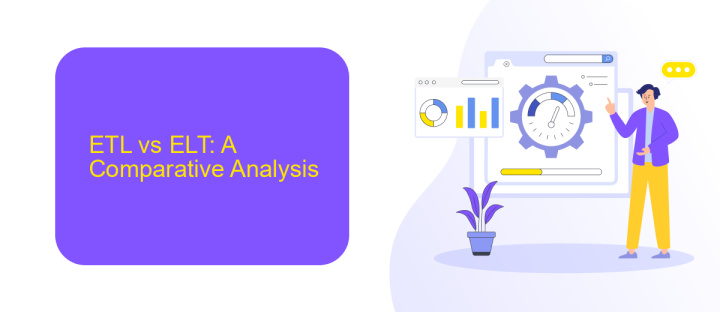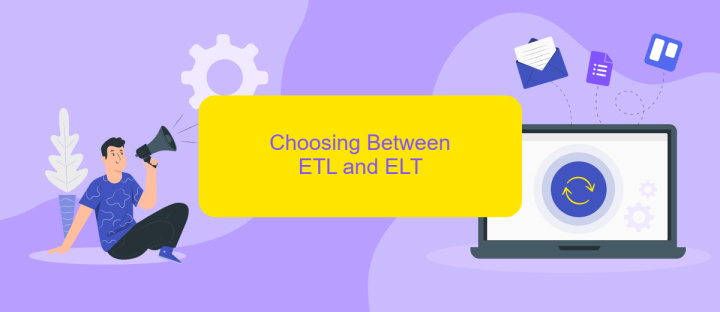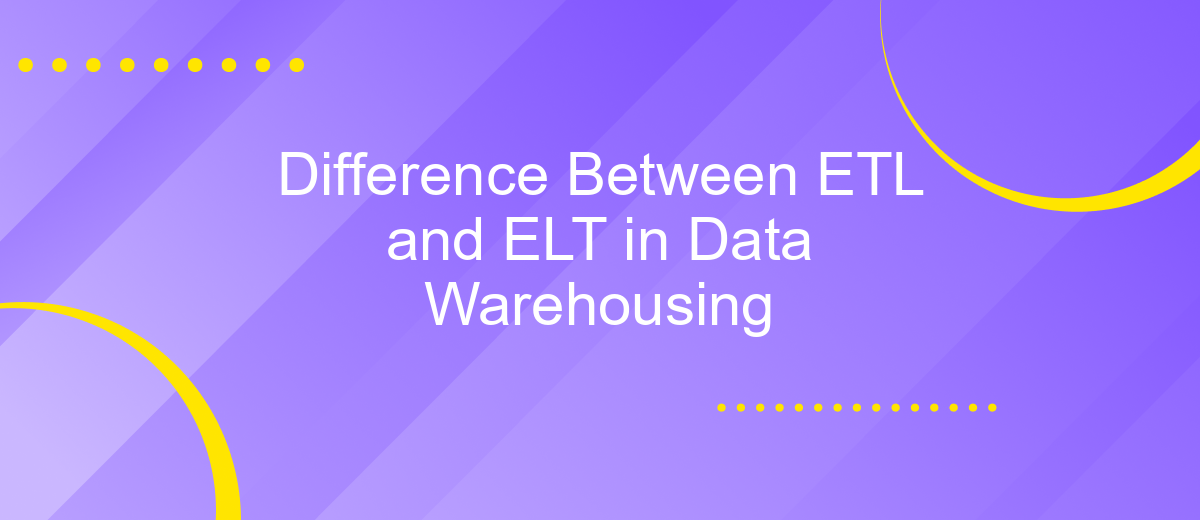Difference Between ETL and ELT in Data Warehousing
In the realm of data warehousing, ETL (Extract, Transform, Load) and ELT (Extract, Load, Transform) are two pivotal processes that facilitate data integration and transformation. While both aim to prepare data for analysis, they differ significantly in their methodologies and applications. This article explores the key differences between ETL and ELT, helping you choose the right approach for your data strategy.
Introduction
In the realm of data warehousing, ETL (Extract, Transform, Load) and ELT (Extract, Load, Transform) are two pivotal processes that facilitate data integration and management. Both methodologies are designed to move data from source systems to a data warehouse, yet they differ significantly in their approach and execution.
- ETL: Data is first extracted from the source, then transformed into a suitable format, and finally loaded into the data warehouse.
- ELT: Data is extracted and loaded into the data warehouse first, and the transformation process takes place within the data warehouse environment.
Choosing between ETL and ELT depends on various factors such as data volume, processing speed, and the complexity of transformations required. Tools like ApiX-Drive can streamline these processes by automating data integration tasks, making it easier for organizations to manage their data workflows efficiently. Understanding the differences between ETL and ELT is crucial for optimizing your data warehousing strategy and ensuring seamless data operations.
ETL vs ELT: A Comparative Analysis

ETL (Extract, Transform, Load) and ELT (Extract, Load, Transform) are two distinct approaches in data warehousing, each with its unique advantages and use cases. ETL involves extracting data from various sources, transforming it into a suitable format, and then loading it into the data warehouse. This method is ideal for complex data transformations and ensures that only clean, processed data enters the warehouse. However, ETL can be time-consuming and requires significant computational resources during the transformation phase.
On the other hand, ELT extracts data and loads it directly into the data warehouse before performing transformations. This approach leverages the processing power of modern data warehouses to handle transformations, making it faster and more efficient for large volumes of data. ELT is particularly beneficial in cloud-based environments where scalability and speed are crucial. For seamless integration and automation of these processes, services like ApiX-Drive can be instrumental. ApiX-Drive simplifies the setup of data pipelines, ensuring smooth data flow between various systems and enhancing overall efficiency.
Choosing Between ETL and ELT

Choosing between ETL (Extract, Transform, Load) and ELT (Extract, Load, Transform) depends on various factors including data volume, processing power, and specific business needs. ETL is traditionally used in scenarios where data transformation needs to occur before loading into the data warehouse, making it ideal for smaller datasets and systems with limited processing power.
- Data Volume: ETL is suitable for smaller datasets, while ELT can handle large volumes of data more efficiently.
- Processing Power: ELT leverages the processing power of modern data warehouses, making it a better choice if you have robust infrastructure.
- Business Requirements: ETL is often preferred for compliance and data governance, whereas ELT is ideal for real-time analytics and faster data processing.
For businesses looking to streamline their data integration processes, tools like ApiX-Drive can be extremely useful. ApiX-Drive simplifies the setup of data integrations, allowing for seamless data transfer between various platforms, whether you choose ETL or ELT. This can significantly reduce the time and effort required to manage data pipelines, making your data strategy more efficient and effective.
Case Studies and Examples

One notable case study illustrating the use of ETL is a retail company that needed to integrate data from various sources, including sales, inventory, and customer databases. By employing ETL processes, they were able to extract data from these disparate systems, transform it into a unified format, and load it into a centralized data warehouse. This enabled the company to perform comprehensive analytics, leading to improved inventory management and customer insights.
In contrast, a financial services firm opted for an ELT approach to handle their massive datasets. By leveraging cloud-based data warehouses, they extracted raw data and loaded it directly into the data warehouse. Transformation processes were then executed within the data warehouse environment, allowing for more scalable and efficient data processing.
- Retail company: Improved inventory management and customer insights using ETL.
- Financial services firm: Scalable and efficient data processing with ELT.
For businesses looking to streamline their data integration processes, services like ApiX-Drive can be invaluable. ApiX-Drive offers automated data integration solutions that simplify the extraction, transformation, and loading of data, making it easier for companies to manage and analyze their data effectively.


Conclusion
In summary, both ETL and ELT processes have their own unique advantages and are suitable for different scenarios in data warehousing. ETL is more traditional and is often preferred when dealing with complex data transformations before loading into the data warehouse. On the other hand, ELT leverages the power of modern data warehouse systems to perform transformations after the data has been loaded, making it more suitable for handling large volumes of data efficiently.
When setting up data integration workflows, choosing the right approach between ETL and ELT is crucial. Services like ApiX-Drive can simplify this process by providing robust and user-friendly tools for automating data transfers and transformations. Whether you opt for ETL or ELT, leveraging a service like ApiX-Drive can enhance your data integration strategy, ensuring seamless and efficient data flow across your systems.
FAQ
What is the main difference between ETL and ELT in data warehousing?
Which approach is more suitable for handling large volumes of data?
Can ETL and ELT be used together?
What are the benefits of using ELT over ETL?
How can I automate ETL or ELT processes?
Routine tasks take a lot of time from employees? Do they burn out, do not have enough working day for the main duties and important things? Do you understand that the only way out of this situation in modern realities is automation? Try Apix-Drive for free and make sure that the online connector in 5 minutes of setting up integration will remove a significant part of the routine from your life and free up time for you and your employees.

